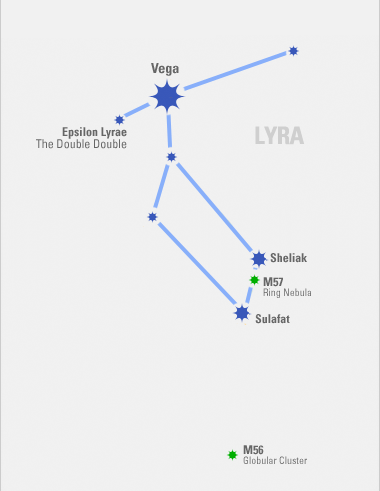

Lyra is currently well placed for observation. Overhead during and after dusk, it passes through the zenith around midnight.
Vega is the northern hemispehere's second brightest star; only Sirius, at a magnitude of -1.5, is brighter. Because the Earth's spin is slightly imperfect, its axis carves a circle on the sky every 26,000 years. The phenomenon, called precession, means that as time progresses each pole, north and south, points to different stars. 13,000 years ago, Lyra was directly above our north pole and therefore acted as our Pole Star. And in another 13,000 years or so, it will once again act in that capacity.
One of the best known planetary nebulas is M57, lying roughly half way between Sheliak and Sulafat. Its cosmic bagel structure is apparent even in a 3" scope and, with larger apertures, only becomes clearer and more detailed. Try several levels of magnification.
M56 is a fairly dispersed globular cluster.
Finally, Epsilon Lyrae is one of the most beloved double star systems. It's fairly easy to split the first double, but higher magnification reveals that each component is itself a binary system.
August 2007






 /
/ 







